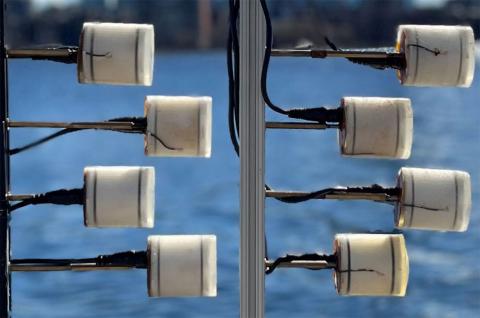Audio Isolating Robot Swarm
Researchers from the University of Washington developed a swarm of audio robots that autonomously position themselves around a noisy environment to create different audio zones, which can be isolated from each other. The robot smart speakers can be used to isolate and record or block out separate conversations, as the sound sources move around the environment.












